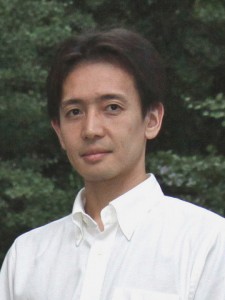 Takuya Yamamoto received his PhD in 2004 from the University of Utah where he worked with Prof. Peter J. Stang. He joined JST ERATO Aida Nanospace Project as a researcher in 2005. Since 2008, he has been an assistant professor of the Department of Organic and Polymeric Materials, Tokyo Institute of Technology. He received the Tokyo Tech Young Investigator Engineering Award from Tokyo Institute of technology in 2010, Award for Encouragement of Research in Polymer Science from the Society of Polymer Science, Japan in 2011, and Challenging Research President’s Honorary Award from Tokyo Institute of Technology in 2011. His current research interests include the synthesis and self-assembly of cyclic polymers for the development of functional materials.
Takuya Yamamoto received his PhD in 2004 from the University of Utah where he worked with Prof. Peter J. Stang. He joined JST ERATO Aida Nanospace Project as a researcher in 2005. Since 2008, he has been an assistant professor of the Department of Organic and Polymeric Materials, Tokyo Institute of Technology. He received the Tokyo Tech Young Investigator Engineering Award from Tokyo Institute of technology in 2010, Award for Encouragement of Research in Polymer Science from the Society of Polymer Science, Japan in 2011, and Challenging Research President’s Honorary Award from Tokyo Institute of Technology in 2011. His current research interests include the synthesis and self-assembly of cyclic polymers for the development of functional materials.
For more information, see: http://www.op.titech.ac.jp/lab/tezuka/ytsite/Japanese/Members/yamamoto.html and http://www.op.titech.ac.jp/lab/tezuka/ytsite/English/Members/yamamoto.html
What was your inspiration in becoming a chemist?
Many of my relatives are related to scientific professions, and some of them are in chemistry. Since I was small, I have had opportunity to be exposed to the state-of-the-art technology of the field, which inspired me to pursue my career in chemistry.
What was the motivation behind the research in your recent Polymer Chemistry paper? (DOI: 10.1039/C1PY00475A)
Cyclic polymers are gaining growing interest due to the distinctiveness from linear and branched counterparts by the absence of chain ends, and their unique properties often rely on the particular topology. Furthermore, cyclic block copolymers constructed by the combination of incompatible segments may provide novel properties and functions upon self-assembly giving rise to the amplification of “topology effects”. We previously reported that a micelle formed from a poly(butyl acrylate)-b-poly(ethylene oxide) cyclic amphiphile exhibits significantly enhanced thermal stability in comparison with one from a linear counterpart (J. Am. Chem. Soc. 2010, 132, 10251). This finding is regarded as the first example of an amplified topology effect by a synthetic cyclic polymer upon self-assembly.
To promote further studies on the subject, the development of synthetic process for amphiphilic cyclic polymers is inevitable to provide a variety of cyclic block copolymers having the programmed combination of segment components with narrow PDIs. In particular, amphiphilic block copolymers with polystyrene segments are of an importance due to their universality and extensive studies on self-assembled structures from linear polystyrene-b-poly(ethylene oxide). Hence, we expected that relevant cyclic polystyrene-b-poly(ethylene oxide) counterparts could provide unique opportunities to reveal novel topology effects upon self-assembly.
Why did you choose Polymer Chemistry to publish your work?
We were invited to write a review in Polymer Chemistry (“Topological polymer chemistry: a cyclic approach toward novel polymer properties and functions”, Polym. Chem. 2011, 2, 1930), which was selected as one of the top ten most-read articles twice. To publicize more of our research from the journal, we submitted the original paper.
In which upcoming conferences may our readers meet you?
I will attend the 61st SPSJ Annual Meeting (May 29-31 in Yokohama, Japan), Warwick 2012 (July 9-12 in Warwick, UK), and the 61st Symposium on Macromolecules, SPSJ (Sept. 19-21 in Nagoya, Japan).
How do you spend your spare times?
I jog on weekends and sometimes hang out with my friends.
Which profession would you choose if you were not a scientist?
I haven’t thought much about it. Probably, an ordinary corporate employee.










